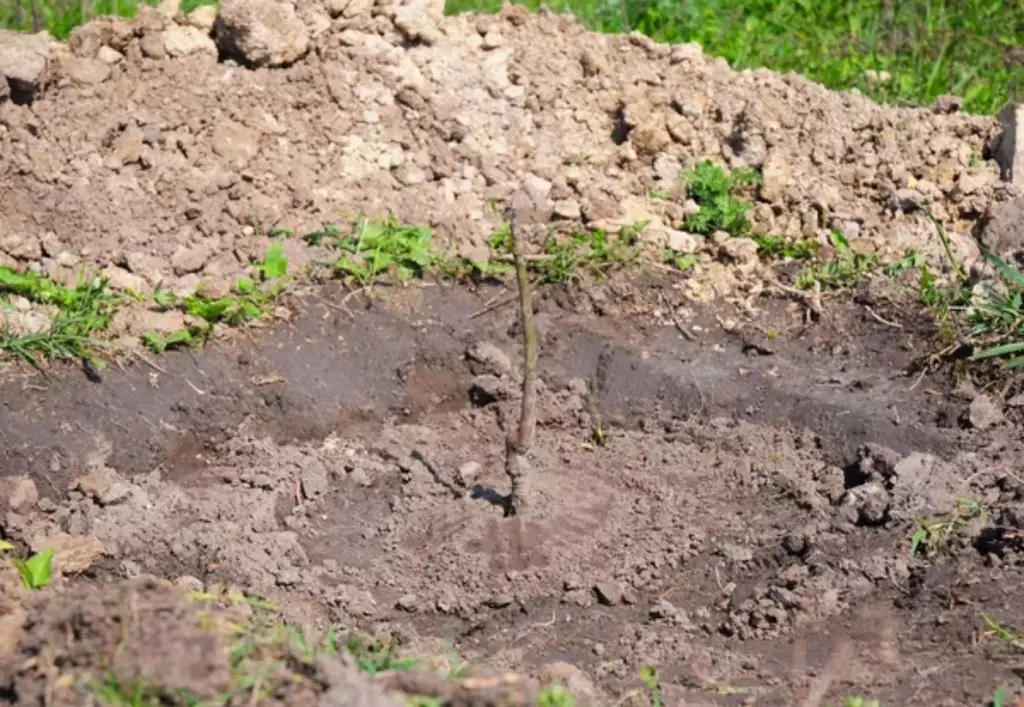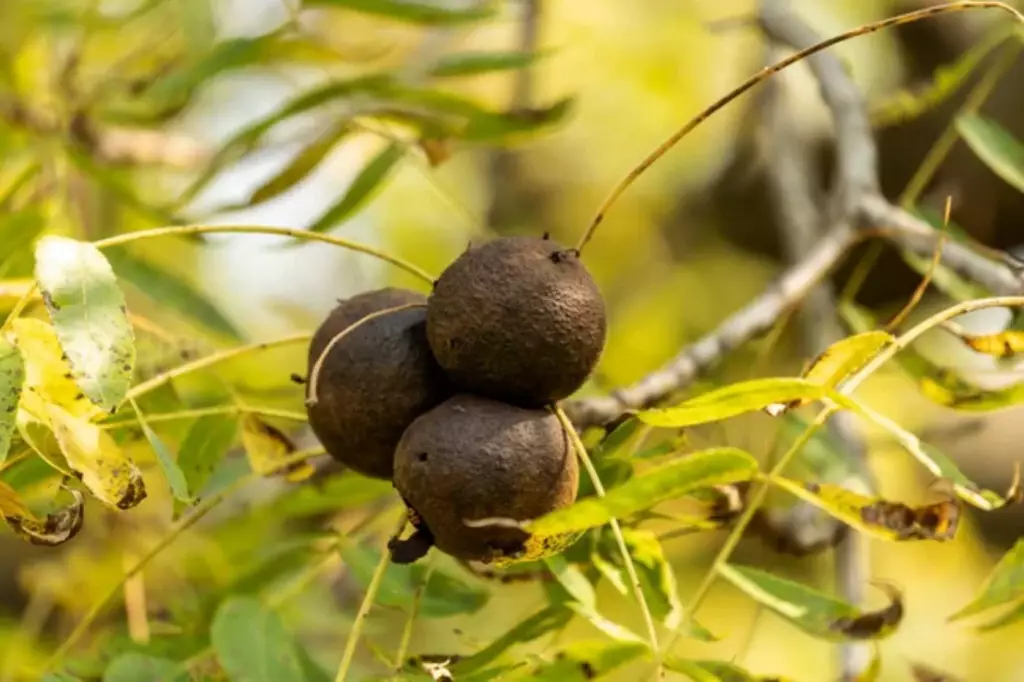How Many Black Walnut Trees Can You Plant Per Acre?
If you want to maximize your potential yield from planting black walnut trees, you need to first determine the ideal number of trees to plant per acre. Since these trees can reach heights up to 130 ft. and have canopy spreads of 50 ft., they will need enough spacing to grow properly. With that, let's find out how many black walnut trees you can plant per acre and what factors determine this number.
For an acre of land, you can plant approximately 436 black walnut trees, based on a 10x10 spacing pattern. It is recommended to plant black walnut trees about 30 feet apart from each other, so they have enough space for their extensive root systems and future canopy growth.
Most growers arrange the trees in concentric circle patterns via a method called crop circle planting to maximize the number of black walnut trees per acre. Let's learn how this method works with other techniques for maximizing space when planting black walnut trees.
Determining how many black walnut trees you can plant per acre is a key step, as it directly influences the layout, density, and potential yield of your orchard, in starting your walnut farm from scratch.
Summary
- You can plant 436 black walnut trees if you follow the spacing pattern of 10 x 10 feet.
- The most recommended spacing for black walnut trees is 30 feet apart, which makes around 48 trees per acre. This is the safest and best spacing for black walnut trees, as they have extensive root systems that release toxic chemicals, which may potentially kill off your other crops.
- Employ the crop circle tree planting method by arranging the trees in concentric circles, ensuring enough spacing for effective sunlight utilization, and increasing the number of walnut trees per acre.

On this page:
Optimal Number of Black Walnut Trees Per Acre
In general, it's recommended to plant black walnut trees about 30 feet apart from each other, making sure they have enough space for their extensive root systems and future canopy growth. This results in about 48 black walnut trees per acre.
However, if you want high-density planting, you can decrease the spacing pattern to 10 x 10 feet apart, so that in an acre, you may be able to plant approximately 436 trees. This is the safest space pattern for black walnut trees, as they produce a chemical called juglone, which can be toxic to other plants.
There are two factors that you need to keep in mind when determining how many black walnut trees you're allowed to put in one acre: proper site selection and the spacing between trees.
Choose and prepare the site for black walnut trees
You must guarantee that the chosen location meets the requirements for USDA hardiness zones 5a through 9a.

You also need to make sure that the area of the plantation provides at least 25 inches of precipitation and 140 frost-free days per year. The ideal soil should be deep, fertile, moist, and well-drained, with textures ranging from sandy loam to silty clay loam.
To start with the site preparation, you may first want to clear the planting site of any debris or weeds to minimize competition for water and nutrients. Then, you can start preparing the soil by tilling or plowing to ensure it is loose and well-aerated, which will promote healthy root development.
Provide enough spacing between trees
The recommended tree spacing for black walnut trees is 30 feet between each tree. To maximize the number of trees you can plant per acre without overcrowding, you may opt to use a grid-like pattern with equal distances between trees in all directions. This will also provide sufficient space for the trees to grow, as they may require more room as they mature.
Based on a planting spacing of 30 feet between trees, you can estimate how many black walnut trees you can grow per acre. To do this, divide the acre's total square footage (43,560 sq ft) by the square footage occupied by each tree (30 ft x 30 ft = 900 sq ft).
This will give you the approximate number of trees that can be planted per acre. For example, 43,560/900 equals 48.4 trees per acre. Round down the number to avoid overcrowding, so you can plant approximately 48 black walnut trees per acre.
You may need to pay attention to the specific site conditions and adapt the planting distances accordingly. If your site has limitations, such as poor soil or rough terrain, perhaps consider planting black walnut trees at wider intervals to provide them with the necessary space to grow and develop properly.
Maintaining and Managing a Walnut Orchard

Be informed on proper pruning and thinning practices
When your walnut trees are young, you may want to focus on formative pruning to establish a strong and well-balanced tree structure. As your trees mature, you can then perform regular maintenance pruning to remove dead, damaged, or crowded branches.
Thinning, on the other hand, ensures that trees have adequate room to grow and can access enough sunlight and nutrients.
Apply proper fertilizer and provide nutrient requirements
Strive to monitor soil fertility and adjust the nutrient input as needed. Walnut trees prefer soils with a pH between 6.0 and 7.0, containing plenty of organic matter. Periodic soil testing will help you determine the appropriate level of fertilizer and ensure adequate nutrients are available.
Nitrogen, phosphorus, and potassium are the primary nutrients necessary for walnut tree growth, while secondary nutrients are calcium, magnesium, and sulfur. You may want to take note of these requirements when choosing the applicable fertilizer for your walnut farm.
Maintain proper soil moisture through watering and irrigation
Depending on your region's climate, you may be required to have additional irrigation to meet the water needs of your trees. You can monitor soil moisture frequently to prevent over- or under-watering and maintain optimal growth conditions. You could also regularly evaluate the efficiency of your irrigation system and make adjustments as needed.
Soil moisture sensors can be a helpful tool for guiding your watering decisions and ensuring that your walnut orchard receives the right amount of water.
Maximizing Walnut Tree Yield Per Acre
Employ crop circle tree planting method
A unique approach to maximizing your black walnut tree yield per acre is the Crop Circle Tree Plantation. This planting method optimizes the trees' growth by arranging them in concentric circles, ensuring enough spacing for effective sunlight utilization.
By adopting this method, you can increase the number of walnut trees per acre and benefit from an efficient, eco-friendly, and aesthetic plantation system. It will also help you maximize yield, and it also provides additional advantages such as reduced water consumption due to the trees' proximity.
Consequently, this planting method may contribute to a more sustainable black walnut plantation.

When planning the number of black walnut trees to plant per acre, consider the worth of an acre of black walnut trees, as this will guide you in optimizing your planting density for the best financial return on your investment.
Optimize the key growth factors
To achieve the highest yield possible for your black walnut plantation, you might need to consider several key factors that influence optimum growth, such as:
-
Spacing: While traditional plantations have anywhere from 20-30 walnut trees per acre, consider increasing this number by employing the Crop Circle Tree Plantation method. However, avoid overcrowding the trees, as this may lead to competition for sunlight and nutrients.
-
Soil: Walnut trees require deep, well-drained soils for proper root penetration and growth. Ensuring optimal soil quality will contribute to increased nut production. Aim for a soil pH between 6.0 and 7.0 with adequate organic matter content.
-
Sunlight: Black walnut trees need ample sunlight for growth and nut production. Ensure that your plantation receives adequate sunlight, and consider optimizing the tree arrangement to make the most of the sun's rays.
-
Maturity: Keep in mind that walnut trees reach maturity after approximately 10 years, and you will need to plan for the long-term growth and management of your plantation. You will need plenty of patience when investing in a black walnut orchard.
-
Disease: Diseases and pests can significantly impact walnut production. Even though black walnut trees are thought to be highly resilient to pests, you may still want to be cautious and vigilant in your plantation management, monitor for signs of diseases, and take necessary preventive measures to safeguard your investment.



